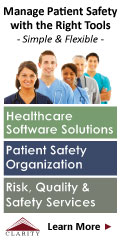 |
 |
 |

May / June 2006

Barcode Implemenation
IVs First:
A New Barcode Implementation Strategy
By Tim Vanderveen, PharmD, MS
The Institute of Medicine's report To Err Is Human focused national attention on the need to improve medication safety to prevent harm (IOM, 2000). Medication errors with the greatest potential to cause significant patient harm are those involving high-risk drugs. Many of the highest-risk drugs (NCC MERP, 1998; USP MedMarx, 2001; Winterstein, et al., 2002) are delivered by intravenous (IV) infusion, and administration is the stage most vulnerable to error (Leape, et al., 1995). The IV route of administration for medications often results in the most serious outcomes of medication errors (Hicks, et al., 2003). Thus, as detailed below, the prevention of IV medication errors at the point of care needs to be a primary focus of hospitals' safety improvement efforts (Williams & Maddox, 2005).
Two medication safety technologies that address different aspects of IV administration errors are barcode medication administration (BCMA) and "smart" infusion systems with dose error reduction systems (DERS). Most hospitals recognize the need to implement both of these technologies, and some have already implemented both. To achieve maximum safety benefits and full functionality, these technologies should be integrated into a seamless system. However, despite several years of development effort, the full functionality of BCMA has not been applied to IV infusions to the same extent that it has been applied to non-infusion medications.
A common strategy is to implement BCMA for non-infusion drugs and then extend traditional barcoding to IV infusion devices, i.e., "IV last." As detailed below, this creates workflow and technical difficulties, especially in intensive care units (ICUs), where most IV infusions are administered. Now a recently introduced infusion technology platform includes BCMA as a built-in component of a computerized infusion safety system with DERS (Figure 1). This integrated system overcomes many of the problems encountered in applying elements of comprehensive BCMA systems to IV infusions. Most importantly, the new system allows hospitals to attain the greatest "speed to impact" in improving medication safety by using both barcode scanning and DERS together to first address the highest-risk IV medication errors.


|
 |
 |
 |


















|
 |













